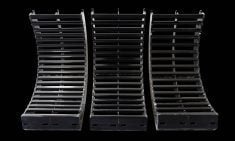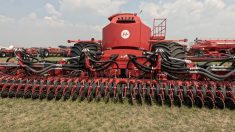Reuters / Farm lending by U.S. commercial banks soared during the fourth quarter of 2012 as farmers borrowed at low interest rates to buy costly livestock feed, new machinery, and fuel for harvest as well as to prepay for seed and fertilizer for the 2013 crop season, the Federal Reserve Bank of Kansas City said Jan. 30.
Bankers reported a spike in farm machinery and equipment loans during the quarter as farmers purchased the big-ticket items before potential adverse changes in U.S. tax laws in 2013. Record crop and rangeland prices in many areas of the Corn Belt and Plains added collateral to farmer balance sheets, at a time when interest rates were at or near record lows as the Fed manages the U.S. economic recovery.
Read Also

Canada seventh on agri-food influence
Comparison of 19 G20 countries says Canadian agri-food needs investments, processing, action on retail consolidation to realize potential
“Total volumes for non-real estate farm loans rose at the fastest pace in three years during the quarter as commercial banks made more loans at higher average amounts,” the Fed said in its agricultural finance data book based on a November national survey of 250 ag bankers.
Demand for loans was strong among livestock producers as they struggled with soaring grain and hay prices, which soared amid the worst summer drought in the United States in more than 50 years. Rising fertilizer and seed prices enticed many grain producers to buy 2013 supplies now rather than wait.
“Loan volumes for feeder livestock rose further as prices for feeder livestock remained high due to short supplies resulting from past herd liquidations,” the survey said.
The uncertainty of government tax policy for 2013 amid the contentious budget negotiations over the year-end “fiscal cliff” also spurred grain farmers, who benefited from massive crop insurance payments that buoyed their finances, to make capital spending purchases rather than risk loss of tax breaks in 2013.
“Tax provisions allowing accelerated depreciation on qualifying farm asset purchases such as machinery, equipment, and special-use or single-purpose agribusiness buildings, including grain bins, drying systems, and livestock barns, were set to expire at the close of 2012,” the Fed survey said. “Producers taking advantage of the tax incentive helped to more than double the volume of farm machinery and equipment loans compared with last year.”
Despite soaring land prices, commercial bankers reported an upward spike in farm real estate loans heading into the fourth quarter as farmers worried about potential wild cards in tax policy in Washington. Sellers became more willing and buyers snapped up land.
“Elevated farmland prices and potential changes in tax policies motivated more landowners to sell before the end of the year,” the Fed survey said. “As a result, most agricultural bankers expected gains in farmland values to moderate during the next year and level off at record-high levels,” the Fed added.














